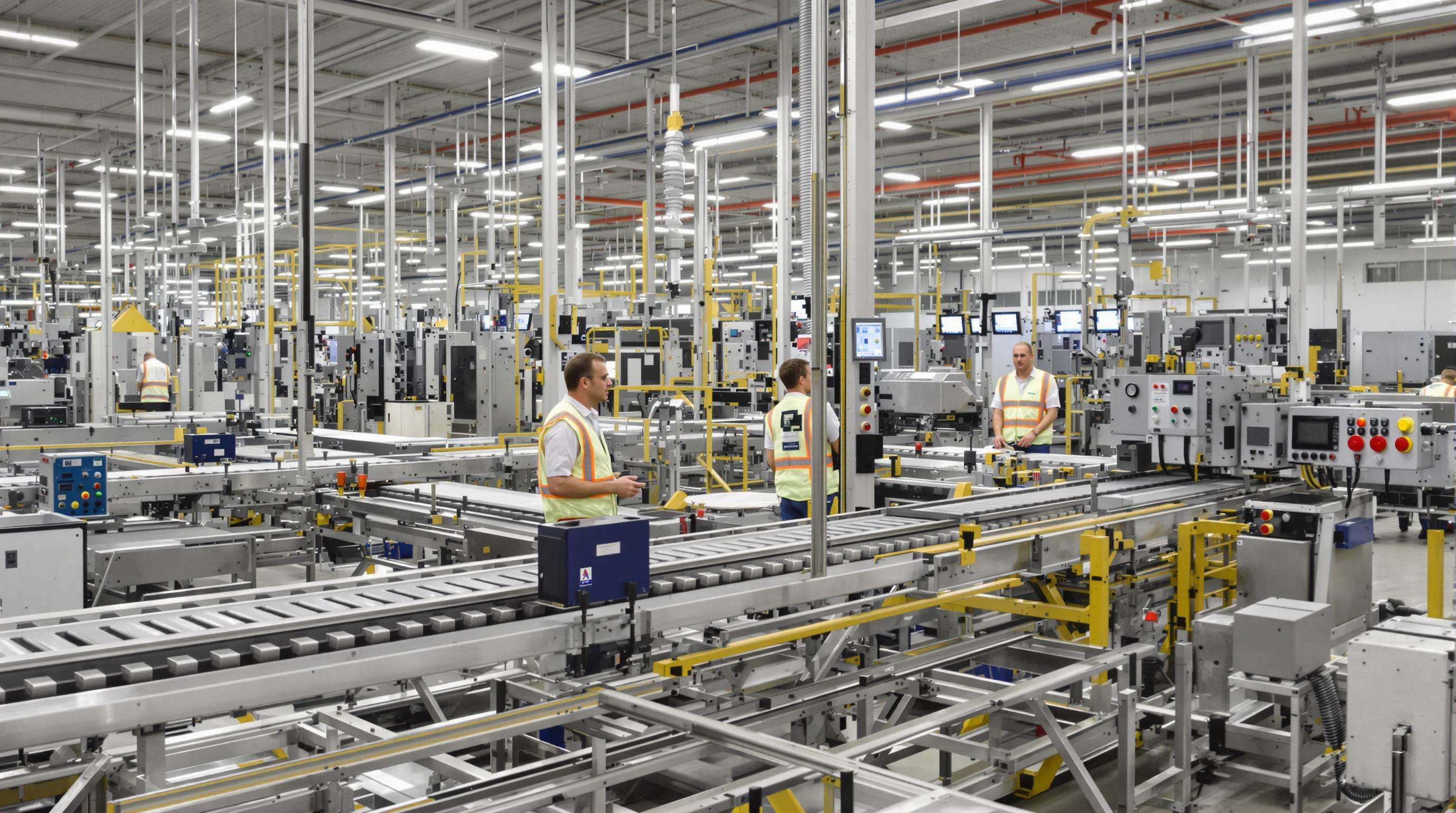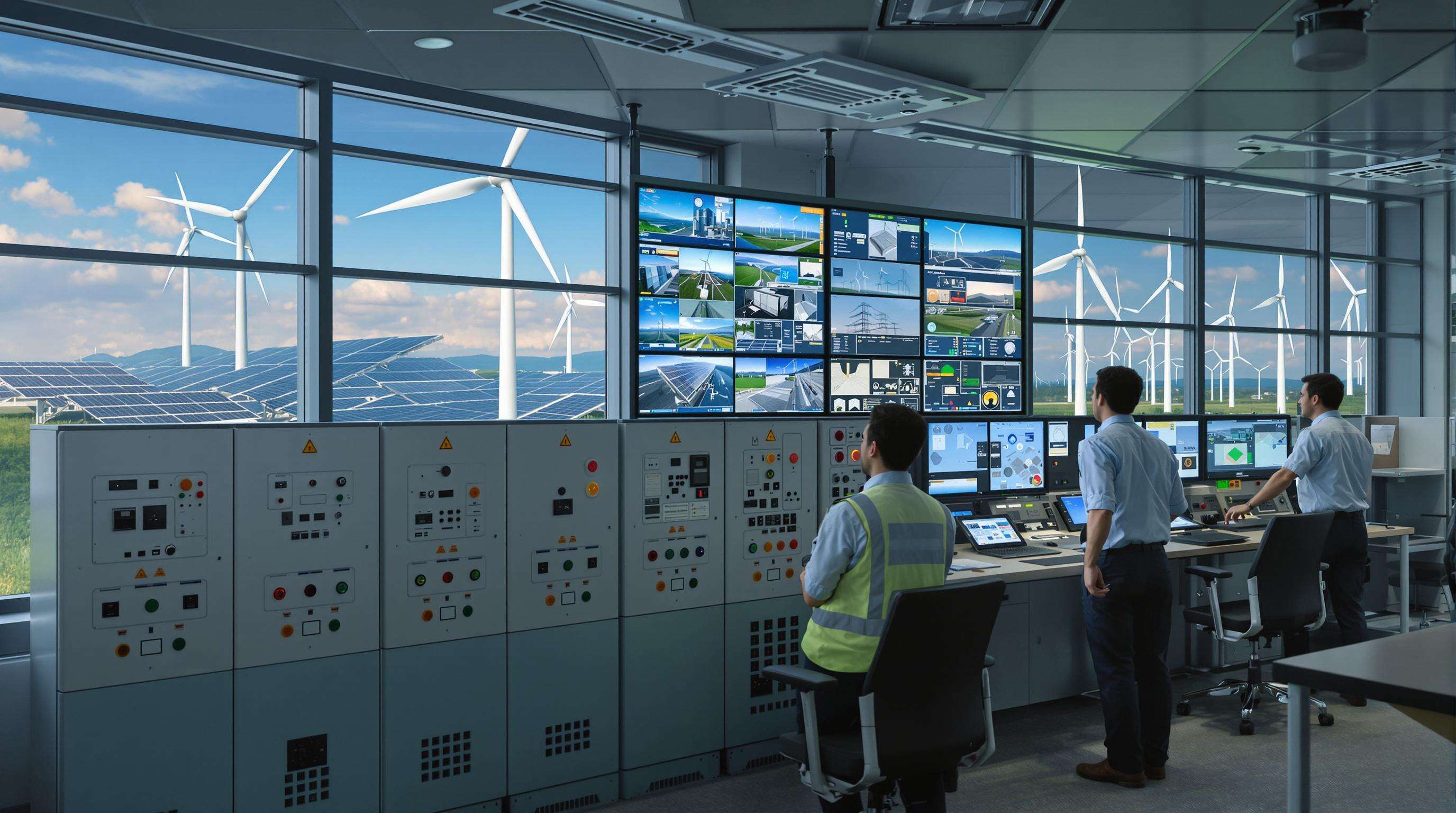
Controlerele logice programabile, sau PLC-uri, scurtează consumul de energie deoarece se ajustează automat în funcție de ceea ce se întâmplă în prezent în cadrul operațiunilor. Sistemele tradiționale cu relea rulează în mod constant, dar tehnologia modernă de PLC face, de fapt, ca motoarele și sistemele HVAC să funcționeze mai eficient, nu mai greu. Uitați-vă la uzinele de îmbuteliere unde PLC-urile sunt frecvent utilizate în prezent. Acestea pot reduce viteza benzilor transportoare atunci când nu există mult produs care circulă, economisind o cantitate mare de energie electrică în acele perioade mai lente. Un alt avantaj major este modul în care aceste controlere detectează problemele din timpuriu. Analizând lucruri precum vibrațiile neobișnuite ale motoarelor sau modelele stranii de căldură, echipele de întreținere primesc avertismente despre posibile defecțiuni cu mult timp înainte ca ceva să cedeze efectiv. Aceasta înseamnă mai puțină energie irosită din cauza reparațiilor de urgență și a timpului de nefuncționare.
PLC-urile care economisesc energie funcționează ca niște centre de control în rețelele industriale conectate la Internetul lucrurilor, comunicând cu dispozitive inteligente senzori pentru a gestiona modul în care energia este distribuită între mașini. De exemplu, atunci când un PLC lucrează împreună cu inversoare solare și sisteme de baterii pentru a se asigura că energia regenerabilă este utilizată în primul rând în perioadele în care prețul electricității este cel mai ridicat. Cu o astfel de configurație, întreprinderile de producție își pot muta sarcinile mai puțin importante în perioadele în care cererea este mai scăzută, respectând totodată cerințele ISO 50001 privind eficiența energetică. Fabricile care au adoptat această metodă observă adesea o reducere a facturilor lunare între 12 și 18 procente, pur și simplu pentru că reduc consumul intens de energie în perioadele costisitoare și își distribuie mai eficient consumul.
| Metrică | Sisteme Tradiționale | Sisteme optimizate prin PLC | Îmbunătățire |
|---|---|---|---|
| Consum mediu de energie | 850 kWh/zi | 595 kWh/zi | 30% |
| Taxele pentru cererea de vârf | 4.200 USD/lună | 2.940 USD/lună | 30% |
| Emisii CO₂ | 2,5 tone/săptămână | 1,75 tone/săptămână | 30% |
Conform datelor publicate anul trecut de Agenția Internațională pentru Energie, sistemele de automatizare PLC reduc semnificativ cheltuielile energetice industriale atunci când se analizează trei domenii principale. O eficiență cu aproximativ 30% mai bună provine din acești controlere logice programabile care elimină operațiunile inutile ale mașinilor și optimizează în timp real factorii de putere. Doar în țările G20, astfel de controlere împiedică emisia a aproximativ 14 milioane de tone de dioxid de carbon în atmosferă în fiecare an, datorită controlului precis exercitat asupra consumului de energie în fabrici și instalațiile de producție. Un asemenea impact evidențiază motivul pentru care mulți producători apelează la tehnologia PLC, atât pentru reducerea costurilor, cât și pentru beneficiile privind mediul înconjurător.
Controlerele logice programabile (PLC) transformă infrastructura industrială învechită în centre de producție agile și eficiente din punct de vedere energetic. Înlocuind sistemele învechite cu arhitecturi inteligente PLC, producătorii obțin reduceri măsurabile ale risipei energetice, menținând în același timp continuitatea operațională.
Controlerele PLC moderne abordează trei limitări critice ale sistemelor învechite:
| Restricții ale sistemelor învechite | Soluții PLC moderne |
|---|---|
| Controale de motor cu viteză fixă | Inversorilor de Frecvență Variabilă (VFDs) |
| Urmărirea manuală a consumului de energie | Monitorizarea în timp real a kW/oră |
| Programări rigide de producție | Ajustări ale capacității optimizate prin inteligență artificială |
Producătorii importanți raportează un ROI cu 18–22% mai rapid atunci când modernizează panourile de control existente cu PLC-uri modulare care au conectivitate OPC UA (Unified Architecture). Aceste actualizări permit o implementare în fază, minimizând timpul de oprire a producției în timpul tranziției către o automatizare mai inteligentă.
Un furnizor automotive Tier 1 a obținut economii anuale de energie de 12,7 GWh prin integrarea PLC-urilor inteligente în 17 celule de producție. Intervențiile cheie au inclus:
Proiectul și-a recuperat investiția de 2,1 milioane de euro în 14 luni, în timp ce a redus emisiile din categoria Scope 2 cu 2.400 de tone metrice.
79% dintre întreprinderile industriale acordă acum prioritate modernizării PLC-urilor în planurile lor ESG, potrivit sondajelor privind sustenabilitatea din 2023. Controlerele eficiente din punct de vedere energetic contribuie direct la trei metrici critice:
Prin combinarea modernizărilor PLC cu standardele de management energetic ISO 50001, producătorii transformă sistematic îmbunătățirile de automatizare în progres sustenabil verificabil.
Controlerele PLC moderne devin inteligente datorită inteligenței artificiale care contribuie la reducerea energiei risipite în întregul proces de producție. Mașinile inteligente analizează înregistrările privind performanțele anterioare împreună cu ceea ce se întâmplă în prezent pe linia de producție. Acestea pot identifica atunci când cererea ar putea crește sau scădea neașteptat și pot ajusta distribuția energiei electrice aproape instantaneu. Conform unui studiu recent publicat de Agenția Internațională pentru Energie anul trecut, aceste sisteme PLC modernizate permit economisirea între 22% și 27% din costurile energetice specifice pentru compresoare și benzi transportoare în majoritatea configurațiilor de fabricație. Ce înseamnă aceasta practic? Fabricile rămân eficiente chiar și atunci când intervin probleme neprevăzute, cum ar fi modificările bruște ale programelor de producție sau defecțiuni neașteptate ale echipamentelor. Unele fabrici raportează că au reușit să continue funcționarea fără scăderi semnificative ale productivității, în ciuda perturbațiilor majore.
Integrate cu senzori Industrial IoT (IIoT) și platforme de calcul la margine, CLP-urile oferă acum o vizibilitate detaliată asupra fluxurilor energetice la nivelul dispozitivelor și al subsistemelor. O implementare tipică a unei fabrici inteligente captează peste 15.000 de puncte de date pe oră, permițând operatorilor să:
Această transparență a datelor ajută fabricile să obțină economii anuale de energie de 12–18%, menținând în același timp capacitatea de producție.
Cererea globală pentru controlere industriale cu inteligență artificială promite să crească cu aproximativ 23,7 la sută anual până în 2030, conform cercetărilor MarketsandMarkets din 2024, în principal din cauza faptului că guvernele devin mai stricte în privința emisiilor de carbon și prețurile la energie continuă să fluctueze puternic. Producătorii auto de top au observat o scădere a costurilor energetice între 30 și chiar 40 la sută după instalarea acestor sisteme inteligente de control logic programabil (PLC) care respectă liniile directoare ISO 50001 pentru gestionarea energiei. Atractivitatea acestei tehnologii constă în faptul că permite companiilor să își atingă obiectivele privind protecția mediului, în același timp reducând cheltuielile zilnice. Datele relevă și o poveste interesantă: există potențial un câștig de 12,6 miliarde de dolari doar în sectoarele industriale grele, dacă companiile trec la această tehnologie.
Sistemele PLC moderne se conectează prin IIoT pentru a urmări cu precizie consumul de energie în întreaga echipare a fabricii. Atunci când unitățile instalează rețele de senzori utilizând standarde precum OPC UA, primesc date în timp real despre cantitatea de energie consumată efectiv de fiecare mașină. Pentru managerii de producție, aceasta înseamnă posibilitatea de a identifica locurile în care energia este irosită – gândiți-vă la compresori care funcționează prea mult timp sau la motoare care consumă energie suplimentară atunci când nu este necesar – și apoi pot configura corecții automate chiar din interiorul programului PLC. Sistemul devine, în esență, propriul său supraveghetor în privința eficienței energetice.

Controlerele PLC avansate interacționează acum direct cu panourile solare, turbinele eoliene și infrastructura rețelelor inteligente prin intermediul portalor de comunicație standardizate. Acest flux bidirecțional de date permite fabricilor să:
Fabricile inteligente din întreaga țară încep să adopte abordări PLC de răspuns la cerere care funcționează în strânsă colaborare cu rețelele electrice locale. Atunci când există o penurie de electricitate, aceste sisteme PLC reduc automat operațiunile care nu sunt critice sau declanșează sursele de alimentare de siguranță, fără intervenție umană. Nu este nevoie ca cineva să alerge să comute întrerupătoarele în timpul unei crize. Beneficiul real aici depășește economiile de pe urma facturilor. Aceste sisteme automate contribuie, de fapt, la menținerea stabilității aprovizionării cu energie la nivel regional atunci când apar tensiuni. Sediile industriale devin parteneri în asigurarea fiabilității rețelei electrice, nu doar consumatori de energie.
Un PLC, sau Controller Logic Programabil, este un calculator digital utilizat pentru automatizarea proceselor electromecanice, cum ar fi controlul mașinilor de pe liniile de asamblare din fabrici.
Controlerele PLC economisitoare de energie funcționează prin ajustarea operațiunilor în timp real, în funcție de condițiile actuale, optimizând consumul de energie și identificând ineficiențele pentru a reduce risipa.
Integrarea PLC-urilor cu sistemele inteligente de gestionare a energiei permite o distribuție mai bună a energiei electrice între mașini, asigură utilizarea mai întâi a energiei regenerabile și reduce taxele pentru vârfurile de consum, determinând economii de costuri și o eficiență energetică îmbunătățită.
PLC-urile contribuie la sustenabilitate și la obiectivele ESG prin reducerea consumului de energie și a emisiilor de carbon, prin îmbunătățirea compatibilității cu energia regenerabilă și prin prelungirea duratei de viață a echipamentelor.
 Hot News
Hot News2024-09-20
2024-09-20
2024-09-20

Drepturi de autor © TECKON ELECTRIC (SHANGHAI) CO., LTD Privacy policy